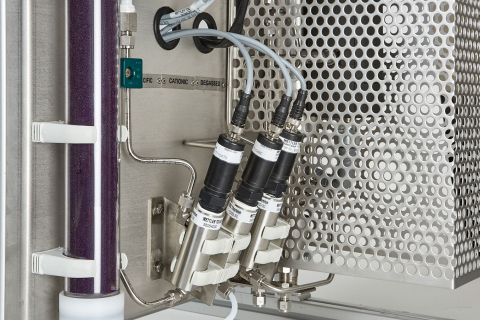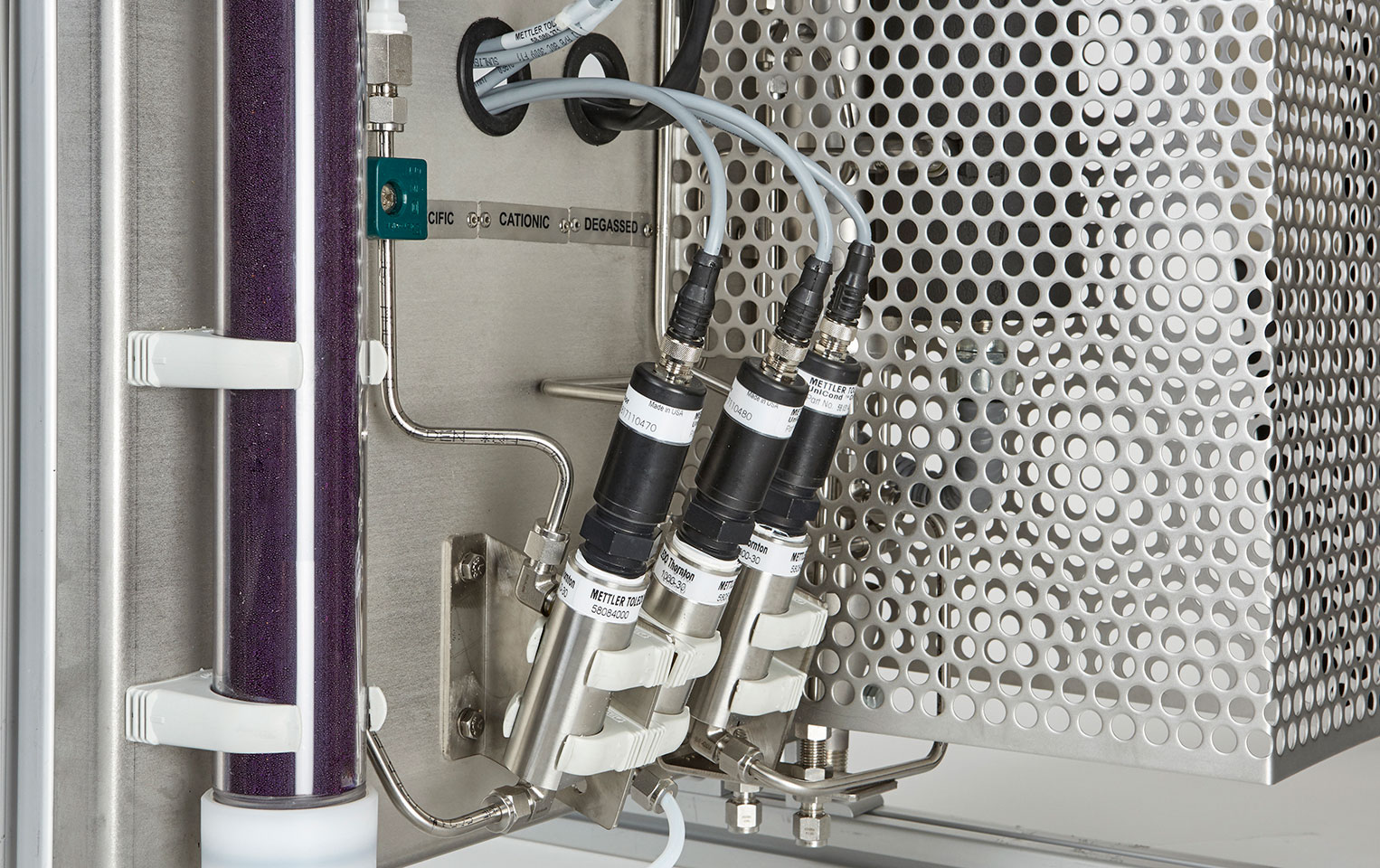Power - Boiler
The treated water is further heated to steam in the boiler. The surface between the water and steam phases is essential for monitoring and control of the boiler water. Here too, pH and conductivity are very important parameters. We also recommend that silica be measured continuously. Depending on the feed water quality and water treatment, phosphates and chlorides are often measured here as well.
Sodium, Silica and Phosphate Analysis
The monitoring and follow-up of water for steam production is all about avoiding corrosion and deposits. Sodium, Na+, is a major cause of corrosion. Silica (SiO2) is responsible for deposits and phosphate (PO43-) serves to prevent corrosion and hard deposits. This has a very negative impact on the efficiency and service life of the turbine in particular. It is important for analysers to have high autonomy, low maintenance and automatic calibration.
pH measurement
The acidity of pure water is a basic parameter for its quality. Due to the extremely low conductivity, a pH measurement is not clear. It is therefore important to choose an electrode with suitable specifications for this type of water. An intelligent and therefore digital sensor helps to increase the quality and reliability.
pH calculation
The pH value of pure water in the steam cycle can be calculated under certain conditions by combining two conductivity measurements: one before and one after the ion exchanger. Combined with a classical conductivity, this gives an increased certainty and one measurement monitors the other.
ORP (redox) measurement
The measurement of the redox potential (ORP) is often mentioned in the same breath as pH measurement. A potential difference is measured against a reference electrode in both measurements and the same measuring converter is used. Today, you can measure pH, ORP and temperature with the same sensor. The ORP measurement is used to control the dosage of anti-microbial products.
Conductivity
Measuring the (specific) conductivity is the simplest and most commonly used inline measurement for checking the quality of pure water. Intelligent sensors use digital signal transmission, which makes them much more accurate than their traditional analogue predecessors.
Chloride and sulphate analysis
When it comes to corrosion prevention, chlorides (Cl-) and sulphate (SO42-) are the most corrosive ions. Detection and monitoring from the lowest sub-ppb concentration level is indispensable in a power plant. For inline analysers, it is important that the analysis time is as short as possible (up to only 15 min.) and the periodic maintenance is limited (2-monthly).
Steam and Water Analysis System - SWAS panel
"Steam and Water Analysis System", or "SWAS" for short, is a panel that brings together the most important process analysers. The simplest form is the combination of conductivity and/or cation conductivity with dissolved oxygen and usually also pH measurement. More comprehensive systems also contain analysers for e.g. Na, Silica, TOC, etc. The panels are often fitted with a so-called "sequencer". This is a system that switches between two or more partial flows which are then analysed in turn for a certain period of time.
More information?







